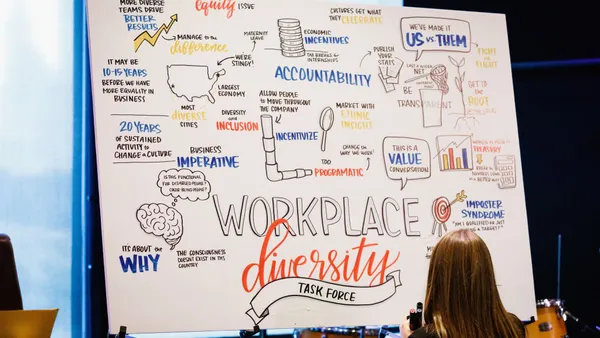When most leaders think about workplace safety, they focus on physical safety. While that is a vital component, workplace safety should entail more than the prevention of physical injury regardless of whether employees work in a manufacturing plant, a retail store, or an office.
The past few years have highlighted just how critical employee well-being is to both individual and whole-business performance. With that in mind, it’s time for the HR sector to lead the way in expanding the view of workplace safety to address whole-person safety.
Whole-person safety considers all aspects of an employee when it comes to creating a safe and productive work environment. This includes physical, psychological, and social safety, as well as safety from external threats to employee well-being.
Examining four components of whole-person safety
Most people are familiar with traditional areas of concern for physical safety: slip-and-fall hazards, having proper personal protective equipment, first aid equipment, and fire safety. Additional action needs to be taken to make this type of training relevant so all employees in all departments understand the whys of safety training. This is currently the most robust area of safety consideration in most workplaces.
HR leaders must also foster an environment that promises psychological safety — ensuring that employees know that they won’t be punished or humiliated for speaking up with ideas, questions, or concerns. When team leaders instill a sense of psychological safety within workplace culture, teams are more likely to share information, avoid groupthink, contribute new ideas, and constructively challenge the status quo.
Although physical and psychological safety can be considered separately, they are undeniably linked. In her book, “The Fearless Organization: Creating Psychological Safety in the Workplace for Learning, Innovation, and Growth,” A.C. Edmondson found that organizations that prioritized psychological safety had 40% fewer physical safety-related incidents. If there’s already an existing level of psychological safety, employees are more willing to come forward with safety concerns and more likely to call out their colleagues for unsafe behavior.
Another aspect of whole-person safety to consider is social safety. While psychological safety has to do with team dynamics, social safety has more to do with workplace culture — particularly the behavior expected of oneself and one’s colleagues. Social safety includes protection from direct and indirect threats of racism, harassment, discrimination, bullying, violence, and behaviors that might make employees feel unwanted or unheard. Diversity, equity, and inclusion initiatives are also social safety practices as they help create a more supportive culture and foster feelings of belonging.
Whole-person safety allows employees to engage in safe behaviors and trust, as well as respect and support each other. The whole-person approach to safety tries to predict the internal and external sources most likely to pose a threat to employees in the workplace and prepare those employees on how to respond to prevent harm to themselves or others. Natural disasters are an example of an external threat, while active shooters, contagions (such as COVID-19), and cyberthreats are threats that could originate within or outside the organization.
Why HR must lead the charge for whole-person safety
For organizations to succeed, they need to foster environments where their employees can thrive. Employees feel they can do their best work in environments that keep their bodies, minds, and spirits safe from harm. Even when organizations want to adopt a whole-person approach to safety, it can be challenging — especially if efforts to do so are siloed.
Currently, a typical organization’s safety manager handles safety training, its training team oversees soft-skill training such as active listening and conflict management, and its HR managers address sexual-harassment-prevention training. But to consider all aspects of safety, one department needs to connect the silos. HR is in the best position to do this.
HR can drive the expansion of the whole-person approach to safety by helping managers develop the skills they need. This establishes a trickle-down approach. In turn, this will help employees understand why the whole-person approach is important. It can’t be forced — it must be championed. HR departments must have the resources and support to undertake such an initiative. HSI offers an extensive training library that can be curated to meet needs for hard- and soft-skill training.
HR leaders are the ideal champions of whole-person safety because they take the pulse of the organization’s culture. They understand that today’s employees and job candidates expect more from employers and are the best poised to bring the necessary tools, influence, and perspective to help companies meet those expectations. Creating a safe workplace requires much more than providing training or checking-off compliance requirements. In today’s highly competitive and fast-moving workplace, organizations must adopt a whole-person approach to safety, and HR can lead the way.










